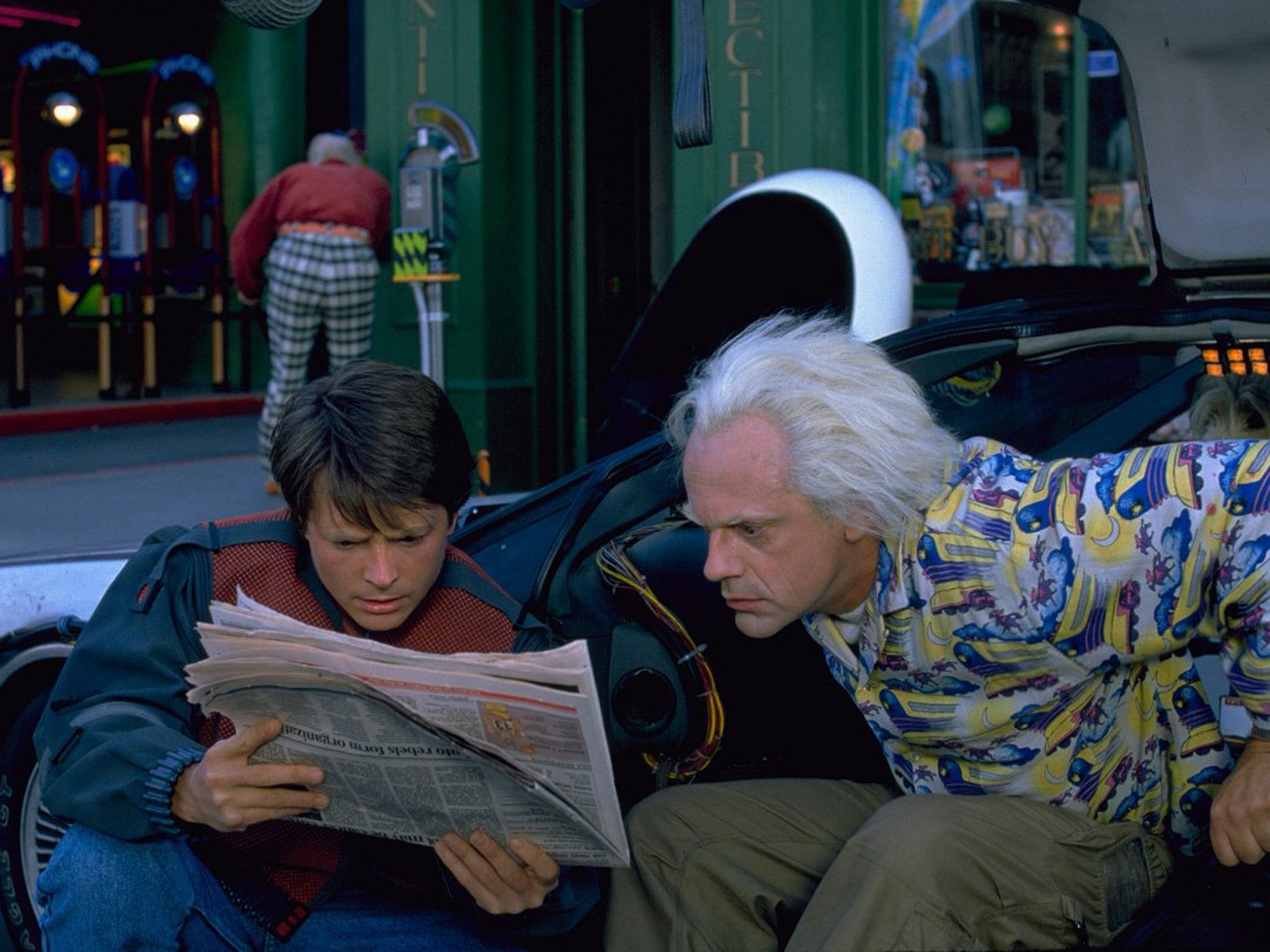Back To The Future 2: now that we've arrived in 2015, how much did the film get right?
Back To The Future: Part II was released in 1989, and made some bold predictions about 2015. That past version of the future is now our present — so how does it measure up?

Your support helps us to tell the story
From reproductive rights to climate change to Big Tech, The Independent is on the ground when the story is developing. Whether it's investigating the financials of Elon Musk's pro-Trump PAC or producing our latest documentary, 'The A Word', which shines a light on the American women fighting for reproductive rights, we know how important it is to parse out the facts from the messaging.
At such a critical moment in US history, we need reporters on the ground. Your donation allows us to keep sending journalists to speak to both sides of the story.
The Independent is trusted by Americans across the entire political spectrum. And unlike many other quality news outlets, we choose not to lock Americans out of our reporting and analysis with paywalls. We believe quality journalism should be available to everyone, paid for by those who can afford it.
Your support makes all the difference.It’s 2015, the year of the glorious high-tech future predicted in Back To The Future: Part II. And the year of endless comparisons to the 1989 film — so how much did it get right?
Its fashion calls might have been wrong — most people aren’t wearing weird silver hats or coats with what look like black post-it notes on. However, the tech predictions were mostly right — with some exceptions.
But Doc, Marty and Jennifer arrived on October 21st, 2015. So we’ve got another 292 days and counting to come up with self-drying clothes and hoverboards.
Right
3D films
The film was right that we’ve been subjected to endless sequels — the 3D film in Back To The Future was Jaws 19 — and we have started to watch them in 3D.
Video calls
The video calls in the film take place on a much bigger screen, but otherwise the prediction was absolutely correct. But we’ve been having them for so long, and they’ve become so ubiquitous, that they don’t even feel especially cutting edge any more.
Wearables
We might not be ready to sit around the breakfast table talking to each other using glasses — but we have the technology. Google Glass is the most famous of technology that fits into glasses, and other companies are hoping to make their own.
Wrong
Hoverboards
We’ve given this one our best shot — Kickstarter after Kickstarter campaign has attempted to finance a hoverboard. And you can make your own by attaching a leaf blower to a hoverboard.
We’ve even created one using the method envisioned in the film. The Hendo uses a magnetic field ot generate lift, and was launched on Kickstarter in October.
But we’re hardly riding them regularly, and most are pretty inflexible. But it’s possible that we could have them by October — here’s hoping.
Power laces
Another popular Kickstarter idea that hasn’t yet come to proper fruition — and perhaps another invention that we only really want so we can live in the future of Back To The Future.
Nike has indicated that some version of the shoe could appear in 2015, but the big and bulky shoes are likely only to be worn by those who want to feel like they live in the film’s world.
Likewise, no indication that clothes that dry themselves are on the way.
Flying cars
Flying cars have become something of a joke among people complaining about the state of technology — smartphones and so on are all very well, but we were promised that our cars would also be able to lift off. There are examples of flying cars, and some of them are very swish. But they remain very expensive and rare, and are likely to stay that way for some time. It’s not even clear that they could ever be common, given how hard it is to fly and how difficult it is to predict air currents.
Faxes
The people in the film communicate through faxes — and completely miss that by the real 2015 we wouldn’t need to print anything at all, given the rise of smartphones and tablets. As such, this might be the biggest miss — perhaps the most important piece of technology in 2015 is missing from the film entirely.
Join our commenting forum
Join thought-provoking conversations, follow other Independent readers and see their replies
Comments